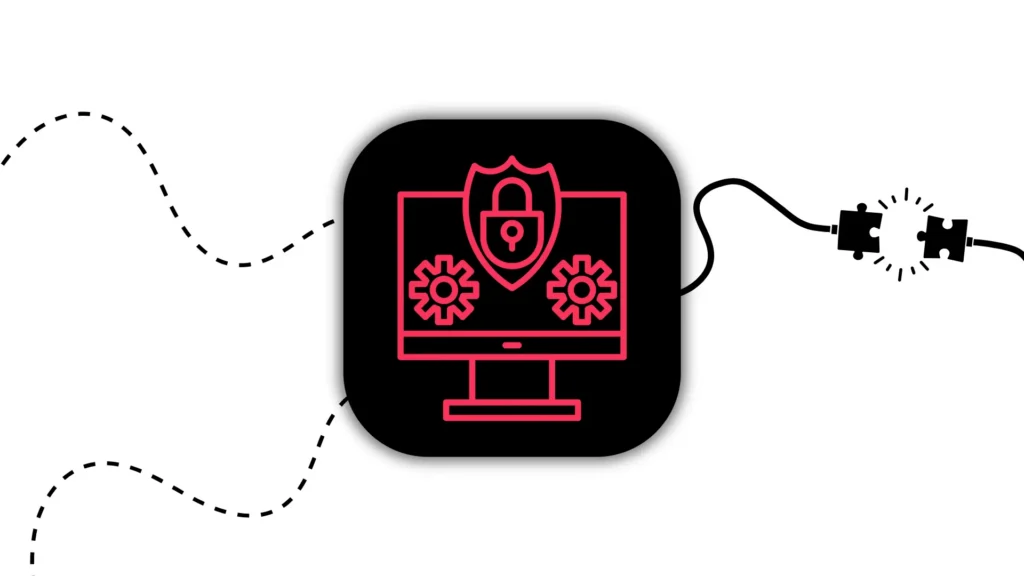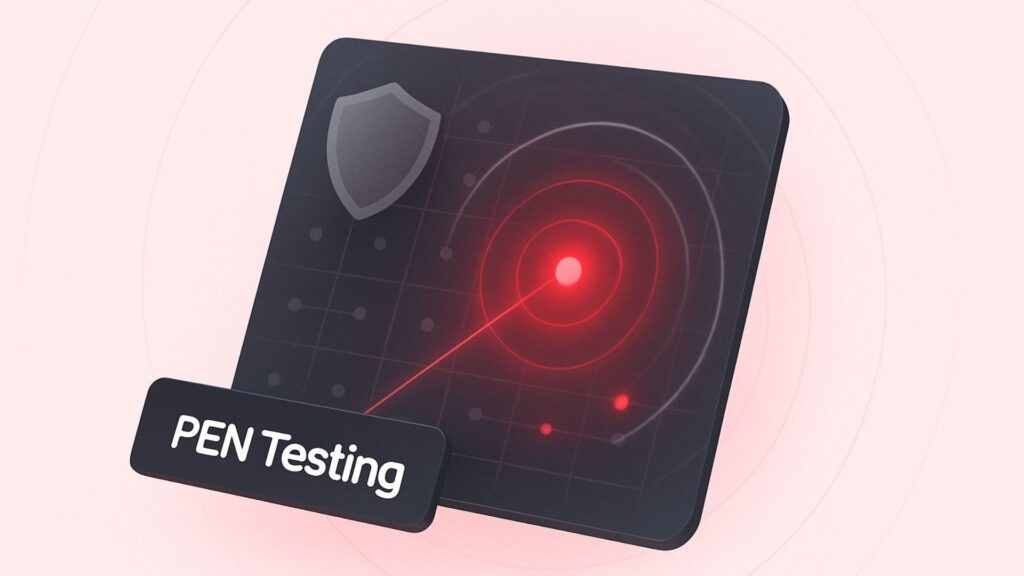Every organization holds something it can’t afford to lose. In cybersecurity, these ‘soft spots’ are referred to as the crown jewels. It’s the digital equivalent of what kings once locked away in the most secure room of the castle.
Castles didn’t protect all ground equally. They were designed to keep attackers away from the few things that mattered. The same logic applies here.
You can’t defend everything with the same intensity. But you can identify what’s most valuable and build your walls around it.
In this piece, we’ll explore what “crown jewels” actually mean in cybersecurity. We’ll see why they matter and how to go about finding and protecting yours.
What qualifies as a crown jewel?

“Crown jewels” are the assets your business simply cannot afford to lose, expose, or disrupt.
They’re not important, they’re critical. Think of them as your company’s heart and brain.
If these are stolen, tampered with, or shut down, the entire business feels it. This could be customer databases, proprietary algorithms, financial systems, or operational controls.
Now, what qualifies as a crown jewel depends on your business and the industry you are in.
- SaaS companies. The source code and infrastructure that run the product. If leaked or damaged, the product can’t be delivered or maintained and competitors might get a free blueprint. User data, especially if tied to enterprise clients, is also a crown jewel because of compliance risk and trust.
- E-commerce and retail. Customer databases, payment processing systems, and inventory management platforms. If these go down or are breached, orders stop, money leaks, and trust takes a hit.
- Supply chain and logistics companies. Real-time tracking systems, route optimization algorithms, vendor portals, and inventory data. These are the tools that keep goods moving. If they’re disrupted, shipments stall, revenue drops, and contractual penalties often kick in.
- Online public services (e.g., digital government portals). Citizen identity data, tax records, health insurance information, and service availability platforms. These assets are often linked to national security, privacy regulations, and public trust. One breach can affect millions.
- Manufacturing businesses. Operational technology (OT) systems like SCADA, PLCs, and MES platforms. These systems control machines and production lines. If they’re tampered with or disabled, entire factories could stop, or worse, cause safety incidents. Design blueprints and R&D data are also high-value targets.
- Financial institutions. Payment networks, trading algorithms, and customer accounts. The stakes here are obvious. Interruption or manipulation of these systems can lead to massive financial losses and regulatory fallout.
The mistake many companies make? Thinking about everything is equally important. That’s like guarding the broom closet while leaving the vault door open.
Why Protecting Crown Jewels Isn’t Optional
When attackers breach a system, they’re usually not looking to cause general chaos. They’re looking for leverage. That means going straight for the most valuable, sensitive, and business-critical assets. It’s what they get most out of.
Take the 2020 SolarWinds breach. Attackers compromised SolarWinds’ Orion software updates pushed to thousands of organizations, including government agencies and Fortune 500 companies.
The attackers targeted the software supply chain. It was a crown jewel that gave them a gateway into high-trust environments. The damage rippled far beyond one company’s network.
Also, consider the 2022 LastPass breach. Attackers stole encrypted password vaults by compromising a senior DevOps engineer’s home computer through a vulnerability in Plex Media Server.
The attacker then got critical cloud storage keys, basically, the digital crown jewels of a password management platform. The incident shook trust at the core of LastPass’s product promise: secure storage.
These examples highlight a key truth. The crown jewels aren’t always where you expect.
That’s why identifying and protecting these assets needs to be part of your security strategy, Penetration testing, and NIS2 compliance.
Best Practices for Protecting “Crown Jewels”

Once you know what your most valuable digital assets are, the real work begins. Below are proven, high-priority strategies used across industries to keep crown jewels secure and resilient.
1. Identify and classify critical “crown jewel” assets
You can’t protect what you haven’t clearly defined. Therefore, the first and most critical step is to identify which assets would cause serious damage if stolen, exposed, or disrupted. Think customer databases, proprietary source code, cloud root credentials, or the systems that keep your business running.
Start by conducting a thorough inventory of data and systems. Apply a classification model that separates routine information from high-impact targets.
In many cases, what you think is most important (like a front-end app) isn’t what attackers are after. They want the infrastructure behind it.
Look for the things that would create regulatory, financial, or reputational fallout if compromised, and make sure they’re labeled accordingly.
2. Apply strong governance and executive support
Protecting crown jewels is a business priority.
Define policies that outline how critical assets are handled, who owns them, and what minimum security standards they must meet.
These shouldn’t live in a forgotten compliance document. They need to be visible, enforced, and updated regularly.
Equally important: assign accountability. Every crown jewel should have an owner responsible for its protection, including reviewing access, monitoring risk, and coordinating incident response if something goes wrong.
Executive sponsorship matters more than you might think.
3. Conduct risk assessments and threat modeling
Not all crown jewels face the same level of risk. Plus, not all attackers take the same route. That’s why a one-size-fits-all defense strategy fails. You need to understand what could go wrong and how.
Start by running focused risk assessments on each crown jewel asset.
Ask: What threats are most likely? What vulnerabilities exist today? What would the business impact be if this asset were compromised?
This process helps separate theoretical concerns from real gaps that need fixing.
Also, go deeper with threat modeling. Map out the attack paths someone might take to reach a crown jewel, including any weak links across systems, teams, or vendors. This gives you a clearer picture of where to invest time and budget.
4. Enforce strict access control and identity management
Not everyone needs a key. The more people and systems that can touch your most sensitive assets, the more likely something goes wrong.
Start with least privilege.
Only give access to the people who truly need it and only for as long as they need it. Use role-based access controls (RBAC) to avoid manual decisions every time someone joins, changes roles, or leaves. Layer on multi-factor authentication (MFA) for all high-value assets and make it non-negotiable.
For elevated accounts, bring in Privileged Access Management (PAM) tools to track, limit, and monitor their usage. Every login, command, and session should be logged and reviewable. Access should also be audited regularly, not just when something feels off.
The goal is to ensure that if someone gets in, it’s because they were supposed to.
5. Segment the network and isolate crown jewels
Flat networks are a gift to attackers. Once they’re in, they can move laterally and quietly until they reach what matters most.
Segmentation changes that. It makes the crown jewels harder to find and much easier to protect.
The idea is simple: put your most critical assets in their own guarded zone.
That could mean placing sensitive databases, admin tools, or backend systems behind internal firewalls or VLANs with strict traffic rules. Don’t assume just because something’s inside the network, it’s safe. Apply the same scrutiny internally as you would for outside threats.
If possible, move toward a zero trust model. That means verifying every access attempt, regardless of location or user role. No implicit trust, no shortcuts.
Make sure dependencies are considered. If a critical system relies on a smaller service or API, that supporting piece needs equal protection.
6. Encrypt and protect sensitive data at every stage
If someone gets past your defenses, the last line of protection should be the data itself.
Encrypt data at rest, in transit, and ideally during processing. Use strong encryption protocols and manage your keys like they’re crown jewels too, because they are. Don’t store them in the same place as the encrypted data, and rotate them regularly.
For extremely sensitive information, consider tokenization or masking. These methods replace real values with stand-ins, so even if attackers get the data, it’s useless without context.
To prevent accidental leaks, you can deploy Data Loss Prevention (DLP) tools to monitor and block risky data movement.
Also, map your data flows. Knowing where crown jewel data lives, who touches it, and how it moves across systems is critical. It helps you spot weak links and apply controls where they matter most.
7. Monitor access and activity around the crown jewels
Defense without visibility is just hope. If you’re not watching what’s happening around your crown jewels, that’s exactly what attackers want.
Set up continuous monitoring for any system, service, or user that can interact with high-value assets. Log every access, every change, and every transfer. Feed that data into a centralized Security Information and Event Management (SIEM) system so you can correlate signals and catch issues early.
Go beyond simple alerts.
You can use behavior-based detection tools that can spot unusual patterns, like someone downloading far more data than usual or logging in at odd hours from a new location.
Don’t wait for red flags to come to you. Build a habit of active threat hunting. Regularly review logs and look for signs of compromise, especially on systems tied to crown jewels. Your goal isn’t just to react, but to spot trouble before it becomes a breach.
Not a Checklist, a Strategy
Assuming no one’s coming for it is the real risk. Protecting your crown jewels is about knowing what matters most and focusing your defenses there with precision.
That means defining what those assets are. Putting controls around who can touch them. Watching closely when they’re accessed. And having a plan for when things go sideways.
The organizations that do this well make crown jewel protection part of how they operate.
This isn’t overkill. It’s discipline. And it’s the difference between a company that survives an incident and one that becomes a case study.
Similar insights

Smart Workflows: AI Tools and Tips for Busy Leaders
16/12/2025
Supply Chain Attacks: Rethinking Third-Party Trust
10/12/2025
Choosing the Right Tech Stack in Uncertain Times
25/11/2025
How to Pitch and Get Your Ideas Approved at Work
12/11/2025
12 AI Cyberattacks That Made CEOs Very Cautious
21/10/2025
14 Books Smart Tech Leaders Are Reading This Fall
07/10/2025
How Renown Business Executives are Using AI?
12/08/2025
Think You’re Secure? PEN Testing Will Tell You
15/05/2025
NIS2 Compliance: A Simple Guide to Get It Done Right
15/05/2025
Let the success
journey begin
Our goal is to help take your organization to new heights of success through innovative digital solutions. Let us work together to turn your dreams into reality.